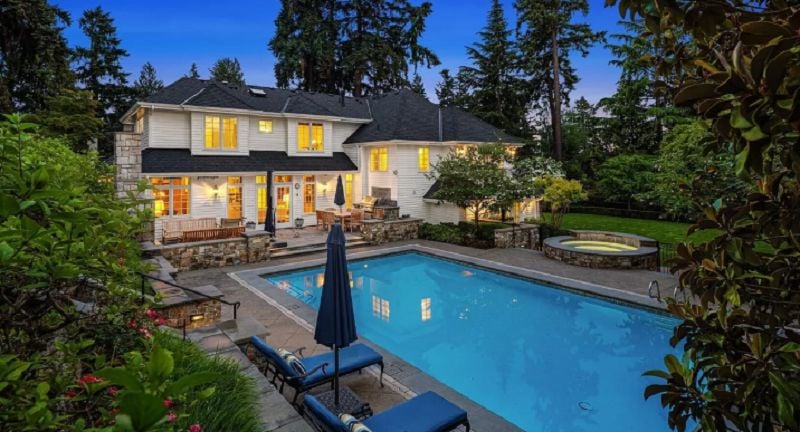The 30 Richest Neighborhoods in the Southwest U.S.: America’s Most Affluent Desert Communities
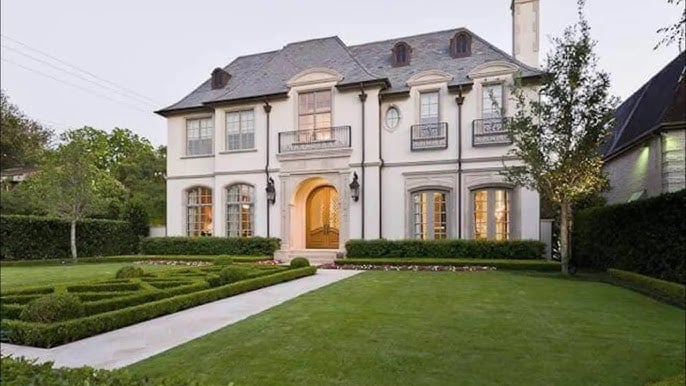
The Southwest United States contains some of the nation’s most affluent residential communities, spanning across Texas, Arizona, and Nevada. These neighborhoods represent diverse forms of luxury living, from historic districts in major metropolitan areas to master-planned communities in desert landscapes.
Wealthy enclaves in the Southwest combine traditional Southern charm with modern amenities, offering residents premium real estate, top-rated schools, and exclusive lifestyle opportunities.
The region’s economic growth, favorable climate, and business-friendly environment have attracted high-net-worth individuals across various industries. These communities showcase different architectural styles, geographic settings, and cultural influences that define Southwest luxury living.
Here are the richest neighborhoods in the Southwest:
1. Highland Park, Dallas, Texas
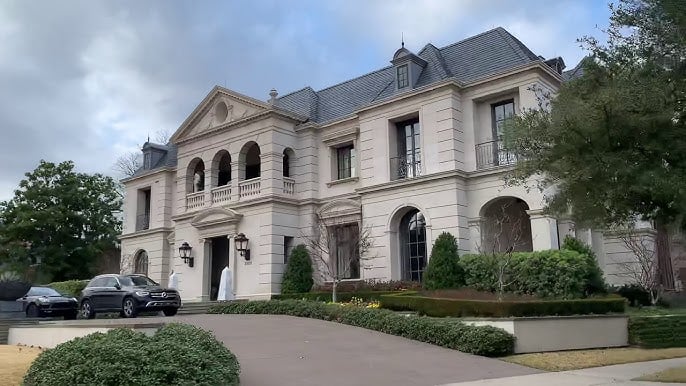
Highland Park stands as Dallas’s most prestigious neighborhood, located just three miles north of downtown. This affluent enclave consistently ranks among the wealthiest communities in Texas and the entire United States.
The neighborhood boasts a median home value exceeding $2.3 million as of 2025. Property values reflect the area’s exclusivity and desirability among affluent buyers seeking luxury living.
Highland Park features tree-lined streets and sprawling estates that define its sophisticated character. The community was developed in the early 1900s by the same architect who designed Beverly Hills.
Residents enjoy access to upscale amenities including Highland Park Village shopping center and the exclusive Dallas Country Club. The area’s top-rated schools attract wealthy families prioritizing education.
The neighborhood’s proximity to downtown Dallas provides convenient urban access while maintaining its residential tranquility. Highland Park recently ranked among the ten wealthiest communities nationwide according to Census Bureau data.
2. Southlake, Texas

Southlake consistently ranks among the wealthiest communities in Texas and the entire United States. This affluent Dallas-Fort Worth suburb has maintained its position as the region’s wealthiest neighborhood for six consecutive years.
The city boasts a mean income of $325,046, reflecting the prosperity of its residents. Median home prices reach $1,264,194, demonstrating the premium nature of local real estate.
Southlake earned the 7th position on the 2025 list of America’s wealthiest suburbs. The community attracts high-earning professionals, celebrities, and athletes who value luxury living.
The area features custom estates, upscale shopping centers, and exclusive amenities. Top-rated schools contribute significantly to the community’s appeal for affluent families.
Southlake’s success stems from its strategic location within the thriving Dallas-Fort Worth metroplex. The combination of luxury housing, excellent educational facilities, and proximity to major employment centers solidifies its status as a premier wealthy enclave.
3. Colleyville, Texas
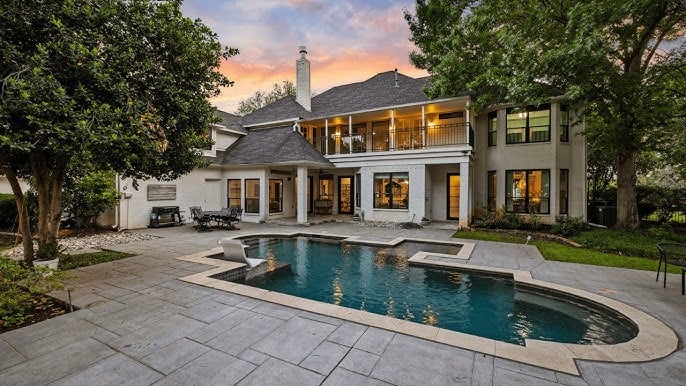
Colleyville stands among Texas’s most affluent suburbs, consistently ranking in national wealthy community studies. The city earned recognition as one of America’s fastest-growing wealthy suburbs in 2025.
Located in Tarrant County, Colleyville maintains a median home value of $586,055. This figure significantly exceeds the national median of $318,879, reflecting the area’s premium real estate market.
The Ashmore neighborhood represents Colleyville’s luxury housing sector. This established enclave features approximately 90 custom-built homes constructed between 1991 and 2001, with residences spanning 4,000 to 5,000 square feet.
Colleyville attracts families and professionals seeking upscale living with convenient amenities. The city offers well-maintained parks, quality shopping, and dining options that enhance its appeal to affluent residents.
The northwest sections of Colleyville contain the most desirable properties, while southwestern areas offer more affordable housing options.
4. University Park, Dallas, Texas

University Park stands as one of Texas’s most affluent communities. This prestigious Dallas enclave maintains a median household income exceeding $214,000.
The neighborhood consistently ranks among the wealthiest areas in the state. Its ZIP code 75225 represents the richest area in the Dallas-Fort Worth region and ranks 82nd nationally.
University Park attracts residents with its historic architecture and top-rated schools. The community offers high-end shopping and easy access to outdoor activities throughout the Dallas area.
This exclusive neighborhood features manicured estates and luxury homes. The area maintains its reputation as a desirable location for affluent families seeking upscale living in North Texas.
The community’s combination of wealth, education, and amenities solidifies its position among America’s most prosperous suburbs.
5. West University Place, Houston, Texas
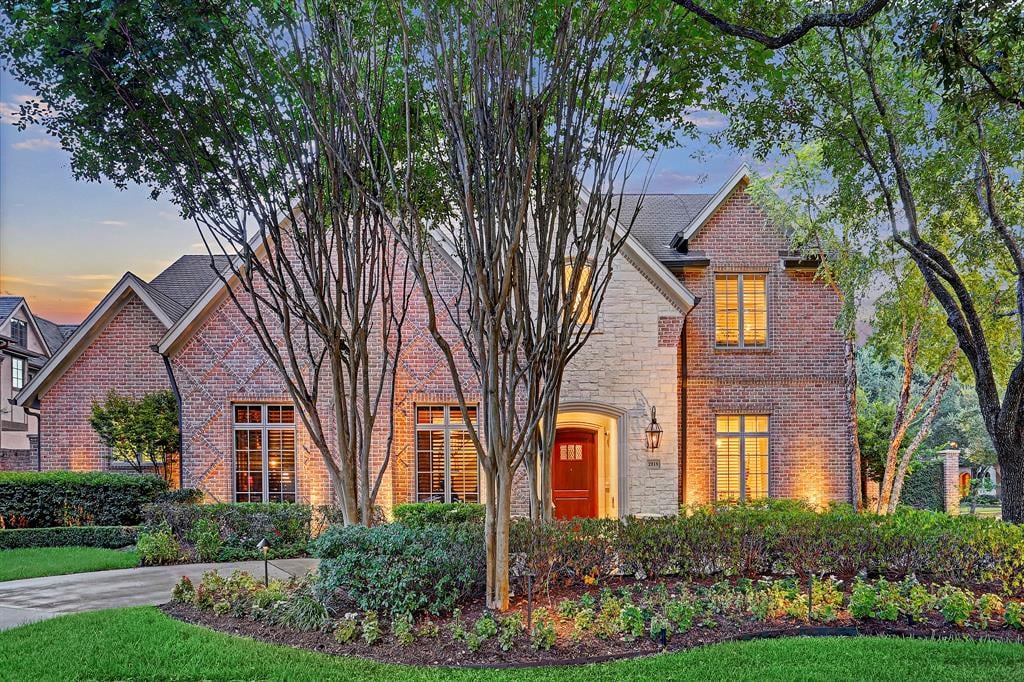
West University Place ranks as the third wealthiest suburb in the United States. This exclusive Houston enclave sits within the city’s prestigious inner loop area.
The neighborhood boasts a median household income of approximately $250,000. Home values in West University Place average over $2 million as of 2025.
Often called West U, this sought-after community attracts wealthy residents seeking upscale living. The area offers convenience with its prime location near downtown Houston.
West University Place maintains its status as Texas’s wealthiest neighborhood. The community combines luxury housing with accessibility to Houston’s business district.
This affluent suburb consistently appears on national wealth rankings. Its high property values and household incomes place it among America’s most expensive residential areas.
6. Coppell, Texas

Coppell stands as one of Texas’s most affluent communities, ranking as the third best place to live in the state for 2025. This Dallas-Fort Worth suburb boasts a median household income of $122,689, placing residents in the 96th percentile nationally.
The city’s median home values reach $432,387, significantly exceeding both state and national averages. Coppell’s real estate consistently ranks among the most expensive in America, reflecting its desirability among high-income residents.
Five luxury neighborhoods define Coppell’s wealthy landscape: The Estates of Coppell, Creekview, North Lake Woodlands, Summit at the Spring, and Red Hawk. These communities feature gated entrances, custom homes, and premium amenities.
The Enclaves at Silver Creek represents the pinnacle of local wealth, ranking among the top 15% highest income neighborhoods nationwide. This exclusive enclave attracts executives and entrepreneurs seeking privacy and luxury living near DFW Airport.
7. Fair Oaks Ranch, Texas
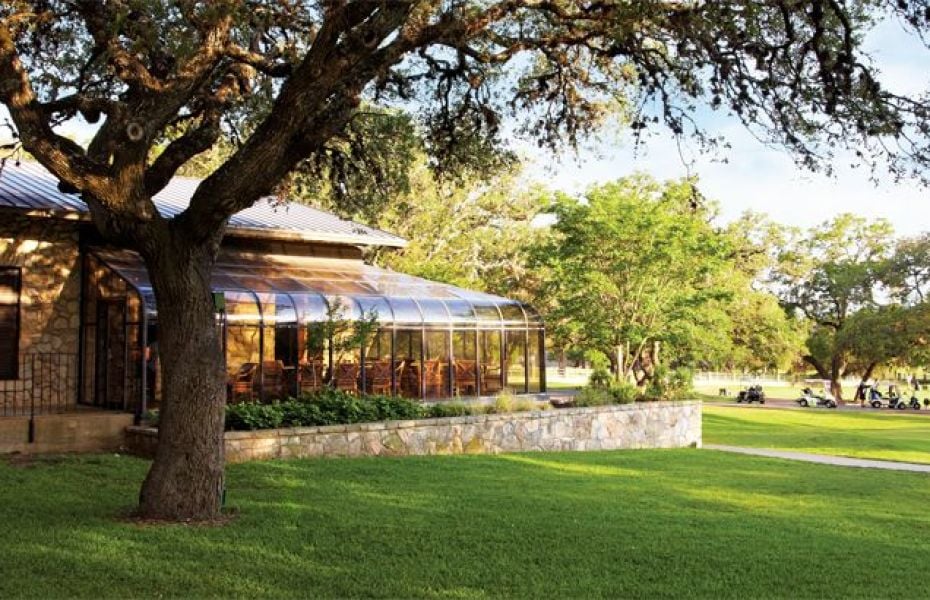
Fair Oaks Ranch sits northwest of San Antonio in the scenic Texas Hill Country. This affluent suburb ranks among the wealthiest communities in Texas with a median income of $127,917.
The city offers residents access to the private Fair Oaks Ranch Golf & Country Club. The club features two championship 18-hole golf courses that enhance the community’s appeal.
Median home prices reach $401,327, significantly above the national average of $318,879. The southwest areas of the city contain the most desirable properties.
Fair Oaks Ranch maintains low crime rates and excellent schools. These factors attract wealthy families seeking spacious homes in a tranquil setting.
The location provides convenience to both urban amenities and small-town charm. Residents can reach San Antonio in less than 15 miles and Boerne in under 10 miles.
8. The Woodlands, Texas
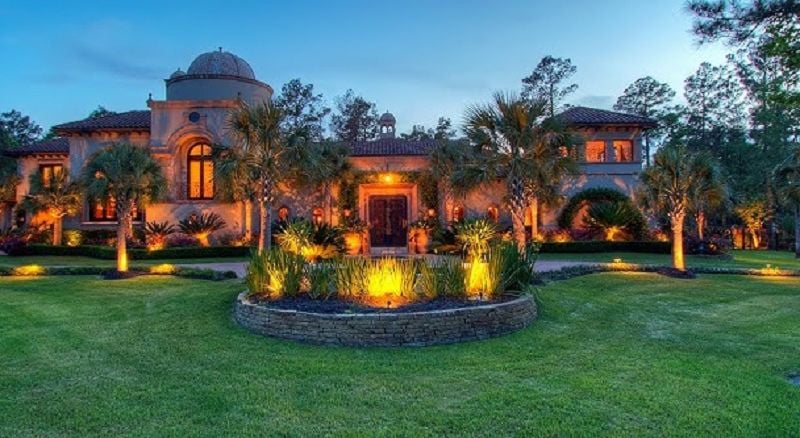
The Woodlands stands as one of Texas’s most affluent master-planned communities. Located north of Houston, this suburb attracts wealthy professionals and families seeking luxury living.
The community has a median household income of $130,011 according to the U.S. Census Bureau. With an estimated population of 114,436 residents, it maintains its status as a high-income area.
Income distribution varies significantly across different neighborhoods within The Woodlands. The southwest areas typically feature higher median incomes, while southeast sections have lower income levels.
The Woodlands offers residents premium amenities and well-planned neighborhoods. Its proximity to Houston’s business districts makes it attractive to executives and professionals in various industries.
This master-planned community continues to rank among Texas’s wealthiest residential areas. The combination of strategic location, quality amenities, and high property values solidifies its position in the state’s luxury housing market.
9. Alamo Heights, San Antonio, Texas
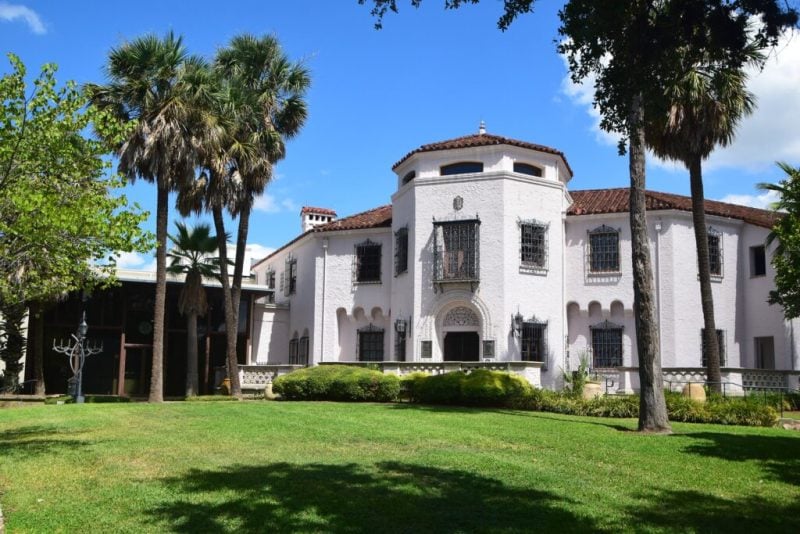
Alamo Heights stands as one of Texas’s most prestigious residential communities. This affluent suburb consistently ranks among the top three richest cities in the state.
The neighborhood attracts prominent San Antonio business leaders, physicians, attorneys, and executives. Its central location provides convenient access to downtown San Antonio while maintaining an exclusive residential character.
Property values in Alamo Heights remain exceptionally high, reflecting the area’s desirability. The community features elegant estates, gated developments, and upscale amenities throughout its tree-lined streets.
With a population of approximately 7,000 residents, Alamo Heights offers an intimate yet sophisticated living environment. The area’s established character and prime location continue to draw wealthy homebuyers seeking luxury and convenience.
Million-dollar homes are common throughout this enclave. The neighborhood’s combination of historical significance, architectural beauty, and proximity to urban amenities solidifies its position among the Southwest’s wealthiest communities.
10. Barton Creek, Austin, Texas
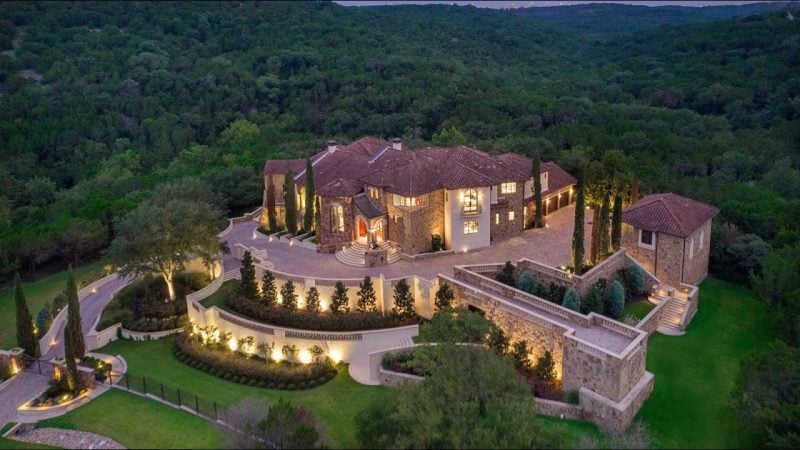
Barton Creek stands as Austin’s most prestigious residential enclave, located approximately 10 miles west of downtown. This gated community consistently ranks among Texas’s wealthiest neighborhoods with average home values exceeding $1.9 million.
The area features custom-built estates situated around the renowned Barton Creek Country Club and Resort. Residents enjoy access to championship golf courses and luxury amenities throughout the rolling Hill Country landscape.
With a median household income of nearly $400,000, Barton Creek attracts affluent professionals seeking upscale suburban living. The community offers country-style tranquility while maintaining convenient access to Austin’s urban core.
The neighborhood’s strategic location provides residents with scenic Hill Country views and proximity to luxury resorts. Barton Creek represents the pinnacle of Austin-area wealth and exclusivity.
11. Troon North, Scottsdale, Arizona
Troon North spans approximately 1,800 acres in North Scottsdale’s foothills. The community sits against Pinnacle Peak in the high Sonoran Desert.
Home prices typically range from $1 million to $10 million. The neighborhood features luxury homes scattered throughout natural desert vegetation and cactus landscapes.
Two premier golf courses anchor this master-planned community. Troon North ranks among Arizona’s top golfing destinations.
The area attracts wealthy residents seeking desert golf course lifestyles. Properties offer views of the iconic Pinnacle Peak landmark rising above the desert floor.
Troon North represents one of North Scottsdale’s most exclusive residential communities. The neighborhood combines natural desert beauty with upscale amenities and championship golf facilities.
12. Paradise Valley, Arizona
Paradise Valley holds the distinction as Arizona’s wealthiest city. This affluent suburb of Phoenix consistently ranks as the most expensive ZIP code in the state.
The town boasts a median home value of $1,588,200. Luxury properties in premium neighborhoods like Camelback Estates and Mummy Mountain Estates frequently sell for over $10 million.
Notable residents have included members of the Kellogg family, Olympic swimmer Michael Phelps, and boxing legend Muhammad Ali. The community attracts wealthy buyers seeking large lots and trophy mansions.
Paradise Valley has experienced a surge of West Coast transplants, particularly from California. These buyers are drawn to the area’s warm weather, lower tax rates, and proximity to Phoenix amenities.
The small town in Maricopa County recently earned recognition on America’s 50 Wealthiest Suburbs list, cementing its status among the nation’s most exclusive residential areas.
13. Arcadia, Phoenix, Arizona
Arcadia sits between Phoenix and Scottsdale, attracting wealthy residents with its unique desert oasis atmosphere. The neighborhood features mature tree-lined streets and well-irrigated landscapes uncommon in Arizona’s desert climate.
Large ranch-style homes from the early-to-mid 20th century dominate the area. These properties offer spacious lots and historic architectural details that command premium prices.
The Arizona Canal runs through Arcadia, providing the irrigation system that maintains the neighborhood’s lush greenery. This water source creates the verdant environment that sets Arcadia apart from typical desert communities.
Located near Camelback Mountain and adjacent to Paradise Valley, Arcadia benefits from proximity to upscale amenities. The area remains one of Phoenix’s most competitive real estate markets.
Property values stay elevated due to the combination of historic homes, abundant vegetation, and prime location between two major cities.
14. Fountain Hills, Arizona
Fountain Hills stands as one of Arizona’s most affluent communities, located just 25 minutes from McDowell Mountain Regional Park. The town earned its name from the iconic 560-foot fountain that serves as its centerpiece.
The median household income reaches $95,772, placing residents in the 89th percentile nationally. This income level significantly exceeds Arizona’s state average and reflects the community’s economic prosperity.
Educational attainment contributes to the area’s wealth profile. Fifty percent of adults hold bachelor’s degrees or higher, compared to the national average of 31 percent.
The town’s 23,639 residents enjoy a median age of 59.7 years. Individual income averages $60,707 according to census data.
Fountain Hills attracts residents seeking upscale desert living with small-town charm. The community hosts regular art festivals and events centered around Fountain Park, creating a vibrant cultural atmosphere within this exclusive enclave.
15. North Central Phoenix, Arizona
North Central Phoenix stands as one of Arizona’s most prestigious residential areas. This historic district features mature citrus groves and expansive estate lots that create a lush desert oasis.
The neighborhood sits in the heart of Phoenix’s upscale corridor. Large properties with significant space between homes define the area’s character and exclusivity.
Mature landscaping and established trees set North Central Phoenix apart from newer developments. The citrus groves add unique charm while providing natural privacy for residents.
Real estate in this district commands premium prices due to its central location and historic appeal. The combination of urban convenience and suburban tranquility attracts wealthy buyers seeking luxury desert living.
The area maintains its reputation through strict development standards and preservation of its agricultural heritage. This balance of history and modern amenities continues to draw affluent residents to the region.
16. Cave Creek, Arizona
Cave Creek stands as one of Arizona’s most expensive real estate markets. This small desert town houses just over 5,000 residents in Maricopa County.
Home prices in Cave Creek significantly exceed Arizona’s state average of $274,828. The community consistently ranks among America’s most expensive real estate markets.
Located near Scottsdale in the Sonoran Desert, Cave Creek blends Old West charm with modern luxury living. The town features western-style architecture, ranches, and upscale amenities.
Residents enjoy a median age of 57.6 years with individual incomes averaging $57,628. The area maintains lower crime rates than national averages.
Cave Creek offers hiking trails, desert landscapes, and highly rated schools. The town’s western atmosphere includes saloons, cowboy culture, and rustic charm that attracts affluent buyers seeking unique desert living experiences.
17. Gilbert, Arizona
Gilbert ranks as Arizona’s seventh-largest town with a population that includes some of the region’s wealthiest residents. The community offers safe neighborhoods across various price points.
Master-planned developments like Val Vista Lakes and Power Ranch feature extensive amenities and well-maintained properties. These neighborhoods attract affluent families seeking suburban luxury.
The town’s appeal stems from its excellent school system and year-round sunny weather. Low crime rates contribute to Gilbert’s desirability among high-income households.
Real estate values reflect the area’s prosperity, with neighborhoods varying significantly in median home prices. The market demonstrates strong demand from professionals and families.
Gilbert’s economic strength positions it among Arizona’s more prosperous communities. The town successfully balances affordability with upscale living options for different income levels.
18. Queen Creek, Arizona
Queen Creek has established itself as one of Arizona’s most prosperous communities. The city’s median household income has more than doubled since 2000, reaching $104,161.
This growth makes Queen Creek the third richest city in Arizona. The town sits in both Maricopa and Pinal counties in the southeastern Phoenix metropolitan area.
Queen Creek’s population of 78,634 residents enjoys access to several upscale neighborhoods. Encanterra, Charleston Estates, and Ranchos Jardines rank among the most expensive areas.
Other notable luxury communities include Queen Creek Town Center and Queen Creek Station. The Pecans, Dorado Estates, Montelena, and Cortina also attract affluent residents.
The city’s rapid economic development has transformed it into a destination for luxury living. Queen Creek Station particularly stands out among Arizona’s most affluent neighborhoods.
19. Westover Hills, Texas
Westover Hills stands as one of Texas’s most exclusive neighborhoods, located near Fort Worth in Tarrant County. This prestigious enclave spans just 455 acres with a population of approximately 641 residents.
The community boasts an impressive average household income of $392,987. It consistently ranks among the wealthiest locations in Texas by per capita income and holds the 12th position for highest-income communities nationwide.
Real estate values reflect the area’s exclusivity, with average home prices around $4.5 million. The neighborhood features grand estates, luxurious mansions, and stately homes set along tree-lined streets within gated communities.
Educational attainment runs high, with 77.30% of residents holding bachelor’s degrees or higher. The community maintains about 30 homes listed in the Tarrant County Historic Resources Survey, highlighting its architectural significance.
Westover Hills offers residents privacy, luxury amenities, and access to private country clubs while maintaining proximity to Fort Worth’s urban conveniences.
20. Castle Hills, Texas
Castle Hills sits as an affluent enclave within the San Antonio metropolitan area. This small city spans just 2.3 square miles and maintains an exclusive residential character.
The community features tree-lined streets with well-maintained properties. Many homes showcase traditional architectural styles from the mid-20th century.
Castle Hills attracts professionals and executives who work in San Antonio’s business district. The proximity to downtown provides convenient access while maintaining suburban tranquility.
The area boasts strong property values that have remained stable over decades. Local zoning regulations help preserve the neighborhood’s upscale residential atmosphere.
Residents benefit from excellent municipal services and well-funded infrastructure. The city operates its own police department and maintains high standards for public amenities.
Castle Hills offers easy access to premium shopping and dining in nearby areas. The location provides a strategic position within San Antonio’s most desirable northern corridor.
21. Westlake, Texas
Westlake stands as the wealthiest suburb in the Dallas-Fort Worth metroplex. The community boasts a mean household income of $471,768 and a median home price of $3,022,159.
This exclusive enclave houses only 1,623 residents across seven square miles. Forbes named Westlake the most affluent community in America in 2011.
The town sits strategically between Dallas and Fort Worth. It lies 31 miles north of Dallas and 23 miles northwest of Fort Worth.
Westlake’s small population contributes to its exclusivity and luxury appeal. The median household income reaches $250,000 according to recent data.
The community represents the pinnacle of affluent suburban living in North Texas. Tree-lined streets and upscale properties define the neighborhood’s character.
22. Bellaire, Texas
Bellaire stands as one of Houston’s most affluent suburban communities. This independent city sits southwest of downtown Houston and earned the nickname “City of Homes.”
The neighborhood attracts wealthy families seeking luxury residential living. Median home values reach $816,296, significantly exceeding the national median of $318,879.
Recent studies by GoBankingRates ranked Bellaire among America’s 50 wealthiest suburbs. The ranking considered median household income, home values, and other economic indicators.
Bellaire features large estates and maintains a family-friendly atmosphere. The community combines residential charm with upscale amenities throughout its well-planned neighborhoods.
This Houston suburb consistently appears on lists of Texas’s wealthiest areas. High-net-worth residents choose Bellaire for its community-oriented lifestyle and proximity to Houston’s business districts.
23. Henderson, Nevada
Henderson ranks among Nevada’s wealthiest communities, with median home prices of $376,634 exceeding the national average. The city attracts affluent residents seeking luxury living near Las Vegas without urban chaos.
Lake Las Vegas and Macdonald Ranch represent Henderson’s most exclusive neighborhoods. These communities feature waterfront properties, championship golf courses, and custom estates with panoramic mountain views.
The southwest areas of Henderson command the highest property values. European-influenced architecture and gated communities define many upscale developments throughout the region.
Henderson’s luxury neighborhoods offer resort-style amenities including private golf clubs and spa facilities. Residents enjoy proximity to Las Vegas entertainment while maintaining a quieter suburban lifestyle.
The city’s affluent areas continue attracting luxury home buyers due to their combination of high-end amenities and strategic location. Henderson provides an attractive alternative for wealthy individuals seeking prestigious desert living.
24. Summerlin, Nevada
Summerlin stands as Las Vegas’s premier master-planned community, positioned on the western edge of the valley against Red Rock Canyon. This affluent area consistently ranks among Nevada’s wealthiest neighborhoods.
The Ridges represents Summerlin’s most exclusive enclave. Situated at the community’s highest elevation, it offers luxury custom homes with panoramic views of the Las Vegas Valley and surrounding mountains.
Tournament Hills provides another prestigious option within Summerlin. This gated community features luxury estates built around a championship golf course, maintaining its desirability despite market fluctuations.
The Summit Club dominates Summerlin’s ultra-luxury market. Recent sales include properties exceeding 30,000 square feet, with some homes selling for record-breaking prices in off-market transactions.
Summerlin’s appeal extends beyond individual neighborhoods. The master-planned community offers top-rated schools, private golf courses, and diverse housing options from luxury estates to upscale condominiums, attracting wealthy families and retirees alike.
25. Green Valley, Nevada
Green Valley stands as Henderson’s landmark master-planned community, established in 1978 by American Nevada Company. This pioneering development spans over 8,000 acres in the southeast Las Vegas Valley.
The community set the standard for modern suburban living in Southern Nevada. It was the region’s first large-scale master-planned development of its kind.
Green Valley features a mix of ranch-style homes from the 1970s and newer developments along tree-lined streets. The area encompasses both single-family residences and upscale condominiums with valley views.
Median home prices in the Green Valley Ranch area reach $417,069, significantly above the national median of $318,879. This pricing reflects the community’s desirable location and amenities.
The neighborhood attracts families, professionals, and retirees seeking suburban comfort near Las Vegas. Strong educational opportunities and community amenities contribute to its appeal among affluent residents.
26. The Ridges, Las Vegas, Nevada
The Ridges stands as one of Nevada’s most prestigious residential communities. This guard-gated enclave spans 793 acres within Las Vegas’s master-planned Summerlin area.
Located 3,200 feet above the Las Vegas Valley, the neighborhood offers panoramic views of Red Rock Canyon and the Las Vegas Strip. The elevated position provides residents with breathtaking desert and city skyline perspectives.
Luxury homes in The Ridges typically range from 4,000 to 10,000 square feet. Recent sales have reached $6.15 million for premium properties featuring extensive square footage and high-end amenities.
The community features the Jack Nicklaus-designed Bear’s Best Golf Course and exclusive Club Ridges access. These resort-style amenities cater to affluent residents seeking luxury living.
The Ridges attracts wealthy retirees and professionals who value privacy and security. Its proximity to the Las Vegas Strip makes it convenient for entertainment while maintaining an exclusive residential atmosphere.
27. Rio Verde, Arizona
Rio Verde stands as one of Arizona’s wealthiest communities, located in Maricopa County near Phoenix. This master-planned community maintains a small population of approximately 2,200 residents.
The area operates as a Census-Designated Place designed specifically as a retirement community for residents aged 55 and older. Its planned development attracts affluent retirees seeking upscale desert living.
Rio Verde consistently ranks among Arizona’s richest neighborhoods due to its high median household income. The community’s exclusive nature and age restrictions contribute to its affluent demographic profile.
The crime rate remains relatively low at 15.72 per 1,000 residents annually. Southwest sections of Rio Verde are considered the safest, with crime risk varying by specific neighborhood location.
This desert community represents the type of luxury retirement destination that draws wealthy residents to Arizona’s Southwest region.
28. McCormick Ranch, Scottsdale, Arizona
McCormick Ranch stands as Scottsdale’s first master-planned community, developed by Kaiser-Aetna in the early 1970s. The prestigious neighborhood spans over 4,000 acres of prime Scottsdale real estate.
This historic community transformed from the original McCormick family cattle ranch into an innovative residential development. Construction occurred between 1972 and 1989, creating what became one of the largest planned communities in the country.
Today, approximately 27,000 residents call McCormick Ranch home. The community encompasses roughly seven square miles in central Scottsdale, making it large enough to rank as Arizona’s 14th largest town if incorporated.
The neighborhood emphasizes community planning over individual architectural grandeur. McCormick Ranch combines historical preservation with modern sustainability practices across its extensive acreage.
Real estate activity remains steady, with multiple properties available through various listings and sales platforms.
29. Estancia, Scottsdale, Arizona
Estancia sits on 640 acres of high Sonoran desert at the base of Pinnacle Peak Mountain. This guard-gated community features fewer than 250 custom homesites spread across the scenic terrain.
The neighborhood offers 264 distinctive estate homes total. This includes 225 custom home lots plus 39 homes within the La Scala community section.
Residents enjoy access to a world-renowned private golf course. The community provides breathtaking mountain views and unmatched amenities throughout its exclusive grounds.
The median age in Estancia is 69 years old. The average individual income reaches $198,484 according to Census data.
Only 209 people call this ultra-exclusive enclave home. The limited population maintains the neighborhood’s secluded desert living atmosphere while preserving its prestigious character.
30. Central Phoenix Historic District, Arizona
Central Phoenix Historic District encompasses 35 distinct historic neighborhoods with properties ranging from $250,000 to over $1 million. These areas preserve architectural styles from the early 1900s through the mid-20th century.
The Roosevelt neighborhood holds the distinction of being Phoenix’s first designated historic district. It features significant commercial and residential structures representing various architectural periods.
Notable districts include the FQ Story District and Coronado Historic District. Many neighborhoods are registered as National Historic Landmarks or listed on the National Registry of Historic Places.
The district boundaries extend roughly from 19th Avenue east to the 51 Freeway. Properties offer unique character and architectural heritage within Arizona’s capital city.
These historic neighborhoods provide an alternative to suburban luxury communities. They attract buyers seeking distinctive homes with historical significance in central urban locations.
Factors Influencing Neighborhood Wealth
Wealth concentration in Southwest neighborhoods stems from distinct economic drivers, strategic real estate positioning, and premium infrastructure investments. These elements create self-reinforcing cycles that attract high-income residents and sustain property values above regional medians.
Economic Drivers in the Southwest
Technology and energy sectors form the backbone of Southwest wealth accumulation. Cities like Austin, Phoenix, and Dallas house major tech corporations that generate high-paying executive and engineering positions.
The oil and gas industry continues driving wealth in Texas neighborhoods. Energy executives and investors concentrate in specific enclaves, particularly around Houston and Dallas metropolitan areas.
Defense contracting significantly impacts Arizona and New Mexico communities. Lockheed Martin, Raytheon, and other aerospace companies create clusters of well-compensated professionals in suburban developments.
Financial services anchor many affluent neighborhoods. Private equity firms, investment banks, and wealth management companies establish regional headquarters that attract six-figure earners.
Key economic indicators include:
- Median household incomes exceeding $200,000 annually
- High concentrations of business owners and C-suite executives
- Proximity to major employment centers within 30-minute commutes
- Strong local job markets in specialized industries
Influence of Real Estate Trends
Land scarcity drives premium pricing in established wealthy enclaves. Limited developable space in prime locations creates artificial supply constraints that sustain high property values.
Master-planned communities attract affluent buyers seeking comprehensive amenities. These developments often feature golf courses, private schools, and controlled access that appeal to high-income demographics.
Historical appreciation patterns reinforce wealth concentration. Neighborhoods with consistent 5-8% annual appreciation rates become self-selecting for investors and wealthy homeowners.
Luxury home construction sets market standards. Custom homes exceeding $1 million establish neighborhood baselines that exclude middle-income buyers.
Notable real estate factors:
- Average home prices: $800,000-$3 million range
- Lot sizes: Typically 0.5-2 acres in premium areas
- New construction: 60% of sales in developing wealthy suburbs
- Investment properties: 15-25% of transactions involve non-primary residences
Impact of Local Amenities and Infrastructure
Private school access drives residential choices for wealthy families. Top-rated districts and exclusive private institutions create geographic wealth clusters around educational excellence.
Healthcare infrastructure influences settlement patterns. Proximity to major medical centers and specialized practitioners attracts high-income professionals, particularly physicians and healthcare executives.
Transportation connectivity determines accessibility to employment centers. Direct highway access, private airports, and premium public transit links support property values in affluent neighborhoods.
Recreational facilities enhance lifestyle appeal. Championship golf courses, country clubs, and cultural venues create environments that justify premium housing costs.
Essential infrastructure elements:
- Fiber internet: Gigabit speeds supporting remote work
- Security services: Private patrol and gated community access
- Utility reliability: Underground power lines and backup systems
- Municipal services: Enhanced police response and public maintenance
Historical Development of Affluent Communities
Southwest luxury neighborhoods emerged from strategic geographic advantages and resource discoveries. Property values in these communities experienced dramatic growth cycles tied to regional economic booms and demographic shifts.
Origins of Luxury Neighborhoods
The Southwest’s wealthiest neighborhoods originated during distinct historical periods tied to economic opportunities. Oil discoveries in Texas during the early 1900s created instant fortunes in cities like Dallas and Houston.
Railroad development connected remote areas to major markets. This infrastructure attracted wealthy investors and industrialists seeking new opportunities.
Desert resort communities emerged in Arizona and Nevada during the 1920s. Palm Springs and Scottsdale developed as winter retreats for Hollywood celebrities and business magnates.
Post-World War II defense contracts transformed cities like San Diego and Phoenix. Military contractors and aerospace executives established exclusive residential enclaves near major installations.
Tech industry growth beginning in the 1980s created new wealth concentrations. Austin’s technology corridor attracted entrepreneurs who developed luxury communities in surrounding hill country areas.
Mining fortunes from copper, silver, and other minerals established early wealth in Arizona and New Mexico. These resources funded grand estates and exclusive neighborhoods that remain prestigious today.
Evolution of Property Values Over Time
Southwest luxury real estate experienced multiple boom cycles since the 1950s. Median home values in top-tier neighborhoods increased 300-500% between 1990 and 2020.
The 1970s energy crisis boosted Texas oil wealth significantly. Houston’s River Oaks and Dallas’s Highland Park saw property values triple during this decade.
Desert communities attracted retirees with substantial assets starting in the 1980s. Scottsdale and Palm Springs became magnets for wealthy individuals seeking favorable tax climates.
Technology sector expansion created new millionaires throughout the region. Austin’s Westlake and Phoenix’s Paradise Valley experienced rapid appreciation as tech executives purchased estates.
Recession periods temporarily slowed growth but never reversed long-term trends. The 2008 financial crisis caused brief declines before values resumed upward trajectories.
Water rights and scarcity concerns increasingly influence property valuations. Neighborhoods with guaranteed water access command premium prices compared to areas facing potential restrictions.



